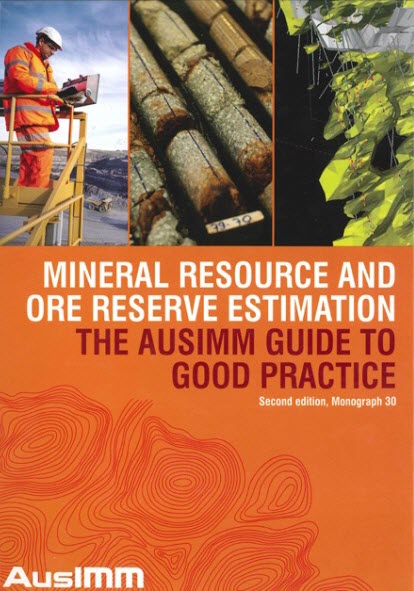Ian Glacken (Director, Optiro)
Aug 01, 2014
This is a reproduction of an article which appeared in Optiro's website, written by Optiro's Director, Ian Glacken. Ian is a well respected geologist and geostatistician and is the co-editor of the Mineral Resource Estimation chapter of Monograph 30 – The AusIMM guide to Good Practice.
--
A volume providing the Australian view of current best practice in the estimation of Mineral Resources and Ore Reserves has recently been released. This is the AusIMM Monograph 30 – The AusIMM guide to Good Practice.
Monograph 30 is a follow-up to Monograph 23, a volume with the same title, which was released in 2001 after some three years of preparation and planning, including a series of seminars. This has proven to be one of the most popular and best-selling Monographs. For anybody involved in the business of generating Mineral Resource or Ore Reserve estimates it is an essential acquisition. Most of the papers in the volume are new, but some of the ‘classic’ papers from the previous volume have either been included or updated.

As with Monograph 23, the current volume has chapters covering the stages and sequence of the resource/reserve cycle, i.e., the resource database, geological modelling, resource estimation, non-resource inputs, ore reserves, risk in resources and reserves, monitoring the reserve, and classification and reporting. The volume’s timing aligns well with the general uptake of the 2012 version of the JORC Code, which became mandatory for new reporting from 1 December 2013, and the implications and details of this Code revision, the first significant update in eight years, are well covered in Monograph 30.
When looking at the volume as a whole in comparison to its predecessor, some eleven years earlier, it is useful to summarise some of the major changes and trends in the resource/reserve cycle. The obvious and predictable difference is the vastly-increased use of digital technology, and the power and productivity which this brings to the industry, not only in the sheer speed and amount of processing but in the increased levels of visualisation and three-dimensional geological modelling. The irresistible rise of implicit geological modelling, through Leapfrog and similar software packages, is one of the more notable changes. The increased awareness and levels of risk assessment, both qualitative and quantitative, is also a notable change, although for this author the acceptance of risk quantification by the industry is still not as great as might have been predicted in 2001, given its absolute importance to the petroleum industry.
Each chapter features an overview paper which introduces and summarises the topic and which reviews and provides a synopsis of the 10-15 papers in each chapter. These summary papers are a useful starting point for those who are new to the resource/reserve process.
Some of the more noteworthy papers among many in the volume are the update on the standard paper on bulk density measurement by Lipton and Horton; a standout summary on the use of calculated mineralogy in ore deposit evaluation by Halley; a snapshot of the state of the art in geological modelling, including excellent case studies, by a team from Gold Fields; a summary of multivariate methods in iron ore estimation by De-Vitry and colleagues; a review of the use of stochastic (simulation) technology in grade control by Dimitrakopolous and Godoy; and a best practice review of reporting potential mineralisation from Mullins and colleagues at BHP Billiton.
As Australian resource and reserve practitioners we can rightly be proud of this volume; while the scope, impact and case study library is decidedly global and many of the authors are renowned international experts working outside of Australia, the overwhelming majority of contributions are from Australian-based workers or teams or relate to Australian projects. This demonstrates that the work and developments by Australian-based mining companies and consulting groups is competitive on a global basis. At Optiro we are equally proud that our staff authored or co-authored four of the papers in the volume.
If you want more information, there is a review in the latest edition of the AusIMM Bulletin; the volume is also available through the
AusIMM website. The AusIMM will also be running a series of seminars throughout Australia and New Zealand in October where selected authors provide condensed versions of their papers.